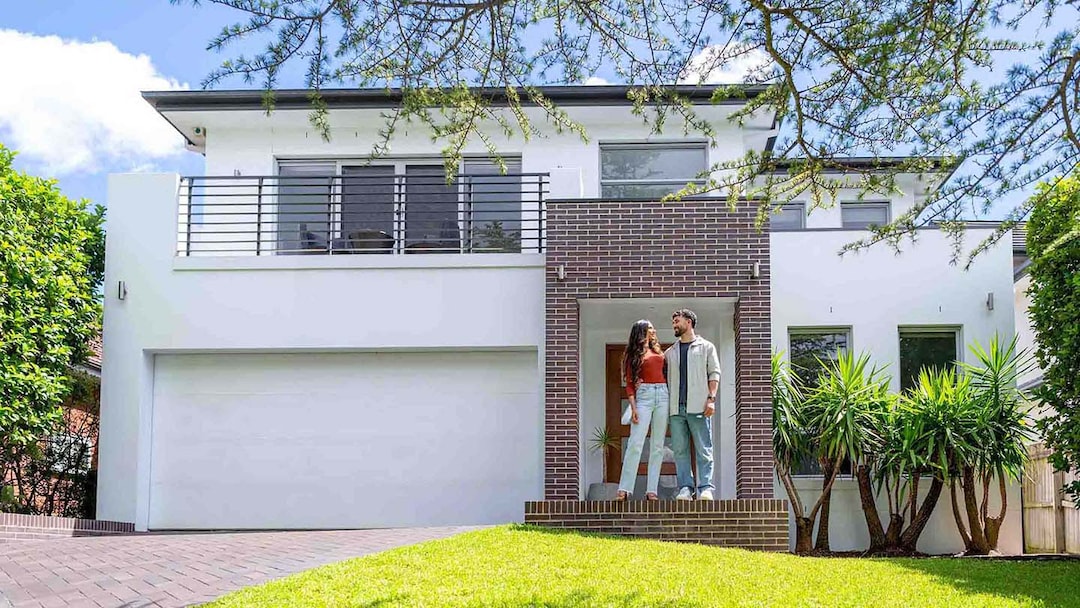Green heating and cooling: A homeowner's guide

If you’re one of the many people who are looking for ways to be more energy efficient or to reduce your carbon footprint, you may be interested in green heating and cooling systems. As technologies offering an alternative to natural gas or oil have continuously evolved, so has the public interest and demand for greener ways to manage your home’s essential functions. This has led to the increasingly widespread usage of these new systems, which often place sustainability front and center.
Types of green heating and cooling systems
There are a few main types of eco-friendly heating and cooling options nowadays. Here are some of the more prominent options:
Air-source heat pumps
Air-source heat pumps have been in use for many years in the United States. The system is made of a compressor and two coils, made of either aluminum or copper. During heating mode, a liquid refrigerant in one coil absorbs ambient heat, causing the refrigerant to evaporate into a gas. Then, the second coil releases heat from the refrigerant as it condenses back into a liquid. This process is reversed when the system is in cooling mode.
Originally, this technology was unreliable in cold climates, so heat pumps were limited to more temperate areas. However, recent advancements have helped it to make it a viable option for colder climates.
According to the United States Department of Energy, an air-source heat pump can deliver up to three times more heat energy to a home than the electrical energy it consumes.
Pros:
- High energy efficiency
- Requires minimal power consumption
- Low maintenance
- Long lifespan
- More affordable than other eco-friendly heating and cooling options
Cons:
- May sometimes be less reliable in cold climates, depending on the model you have
- May be noisy
- Susceptible to power outages
Geothermal heat pumps
Geothermal heat pumps take advantage of the near-constant temperature underground. Below the earth’s surface, the soil typically remains between 50 degrees and 59 degrees year-round. This means it’s generally cooler than the ambient air temperatures in summer, and warmer than the ambient air temperatures in winter. Geothermal heat pumps use this difference in temperatures to provide heating and cooling to homes.
A geothermal pump system is made of three parts — an underground heat collector, a heat pump and a heat distribution system, which is generally conventional ductwork. These systems can be more expensive to install than an air-source heat pump, but typically provide greater energy savings.
Pros:
- Provides significant savings on heating and cooling costs
- Long lifespan
- Little maintenance
- Effective in all climates
- May be eligible for government financial incentives
Cons:
- Higher upfront cost
- Requires professionals to install
- May require significant landscape work
Solar heating and cooling
Solar heating and cooling systems harness the thermal energy from the sun for heating and cooling. The system uses solar energy to heat either liquid or air, and then transfer it to either the interior space or a storage system.
Solar air heating systems are typically wall-mounted to give them the best opportunity to catch solar radiation in the winter. Additionally, solar collector panels are often installed several inches from a south-facing wall. The heated air warms the house through a duct connected to the HVAC intake.
Pros
- Lower energy bills
- Reliable
- Low maintenance
- More affordable than other green options
Cons
- May be less effective in regions with frequent cloud cover
- In areas with heavy snowfall, the panels may require frequent cleaning
Cost of eco-friendly heating and cooling
When it comes to the construction and installation of eco-friendly heating and cooling, the experience will vary depending on the system. One thing to keep in mind is that because these are still considered alternative ways to heat your home, it may be harder to find skilled technicians. When choosing an installer, try and find one who has experience successfully installing the type of system you’re going with. If your local government has a green energy department or if there’s a local green energy advocacy group nearby, they may be able to point you in the right direction.
Air-source heat pump cost
The cost to install an air-source heat pump can vary depending on the size of your home and your location, among other factors. The low end of the range is generally a few thousand dollars, while the high end could be quite a bit more. Getting a high-efficiency unit will generally bump the price into that higher end.
Geothermal heat pump cost
Because geothermal heat pumps pull heat from underground, there are some added costs due to the excavation and underground piping requirements. You may find it can cost in the tens of thousands of dollars for a geothermal heat pump installation. Again, this is just an estimate and a variety of factors, including what the soil is like on your property, can affect the cost. For an accurate estimate, reach out to local professionals.
Solar heating and cooling cost
The cost for a solar heating and cooling system will typically depend on how much space you’ll be heating or cooling. If you’re just using it in conjunction with or as a supplement to your current HVAC system, it may cost a few thousand dollars. However, if you’re heating your entire home that way, costs could climb into five figures. Some smaller solar air heaters may be installed by the homeowner, so you may be able to save on the installation cost that way if you feel up to the task.
How green heating and cooling affects energy savings and resale
There’s no way to predict exactly how much each person will save if they decide to explore green heating and cooling options for their homes.
There are a number of factors that determine the cost of your energy bills, though it's likely that switching to a more eco-friendly heating and cooling system will save you money in the long run on your bills. However, due to the cost of installing the new system, it may be a few years before you really start to see a return on your investment.
Green heating and cooling systems often add some value to a home, which may help you to sell your home for more in the future. Because these systems aren’t yet ubiquitous, it’s unknown exactly how much of a bump in resale value you can expect.
In summary
As people look for more sustainable energy sources, green heating and cooling systems are continuing to grow in popularity. If it’s something you’re considering, it’s important to know your options and what may suit you best. The good news is that whatever you choose, you’re likely to see an increase in energy efficiency.



